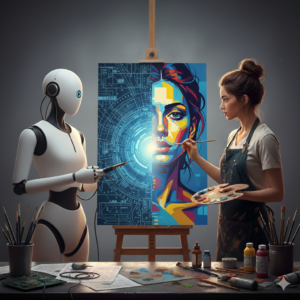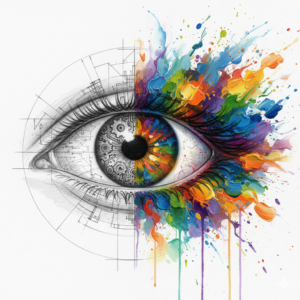I imagine that most people will probably fall into one or the other of these camps when asked what is web design. Some will see the imagery, layout, colours and see it as a piece of art. Others may look more at the construction of the site, how easy is it to use, navigate, and how functional and convenient it is.
 The reality is that it takes a careful blend of both to achieve a truly great website. A beautiful piece of artwork might not be able to deliver a speedy and easy to use interface, and like-wise, a fully functional website could look drab and monotonous. So blending great artistic skills with careful functional programming is vital and can be the difference between near-miss and success. There’s a few other aspects that have to be considered too, accessibility is not just important but also the law, and ensuring your site can be accessed by those with enhanced needs, such as blindness or reduced motor control, can open up your market to those sometimes cut off. Functional considerations are equally important – some websites are just static information, but many need real-time feeds of data to make them truly useful. Displaying data can often be a compromise between necessity and practicality. Careful consideration should be given to how, and how much, data is displayed so as not to overload the screen and the user. There are many ways to tackle this such as pop-ups, hover-overs or click-throughs, some are better suited in certain circumstances, but you should always check your accessibility requirements alongside any style choices as they can be in conflict.
The reality is that it takes a careful blend of both to achieve a truly great website. A beautiful piece of artwork might not be able to deliver a speedy and easy to use interface, and like-wise, a fully functional website could look drab and monotonous. So blending great artistic skills with careful functional programming is vital and can be the difference between near-miss and success. There’s a few other aspects that have to be considered too, accessibility is not just important but also the law, and ensuring your site can be accessed by those with enhanced needs, such as blindness or reduced motor control, can open up your market to those sometimes cut off. Functional considerations are equally important – some websites are just static information, but many need real-time feeds of data to make them truly useful. Displaying data can often be a compromise between necessity and practicality. Careful consideration should be given to how, and how much, data is displayed so as not to overload the screen and the user. There are many ways to tackle this such as pop-ups, hover-overs or click-throughs, some are better suited in certain circumstances, but you should always check your accessibility requirements alongside any style choices as they can be in conflict.
I’ve seen plenty of websites that take functional design far too far, focusing almost entirely on simplicity and clarity without really any nod towards flare or art, and I’m sure you have too! Often these are (government) institutional sites where artistic design has no real place, and that’s fair enough, there’s no need for clever artwork, or swishy intros. But some elements shouldn’t be overlooked, even in those cases. Users have to enjoy using the website to some extent, it helps with the overall feel and usability of the site and a happy user is definitely preferred to a frustrated one!
In the other direction you will find examples of websites that are pure works of art, built almost specifically to show off an artistic trend or flare. But when this fails to incorporate good functional design alongside that art, then you can get something known as mystery meat navigation – you open the website to a great splash of art, beautiful and awe-inspiring, but once that has faded (or gone into endless loop), you have no idea what to do with the site, a hidden menu, or random images to click, or requiring a deep scroll before uncovering something of use!
A good website needs to attract the user, sell your company/product, be something the user passes on to others, and ultimately, it needs to be useful to the users, help them achieve the goal of visiting you, simply and without struggle. Good sites find ways of blending the artwork with the functionality and become sites that get repeat visits, as well as being recommended onwards to others to grow your audience. Ensure your site meets the needs of all your users, such as accessibility, and also functionality, don’t just focus on pretty pictures and a clever swoosh.
something the user passes on to others, and ultimately, it needs to be useful to the users, help them achieve the goal of visiting you, simply and without struggle. Good sites find ways of blending the artwork with the functionality and become sites that get repeat visits, as well as being recommended onwards to others to grow your audience. Ensure your site meets the needs of all your users, such as accessibility, and also functionality, don’t just focus on pretty pictures and a clever swoosh.

